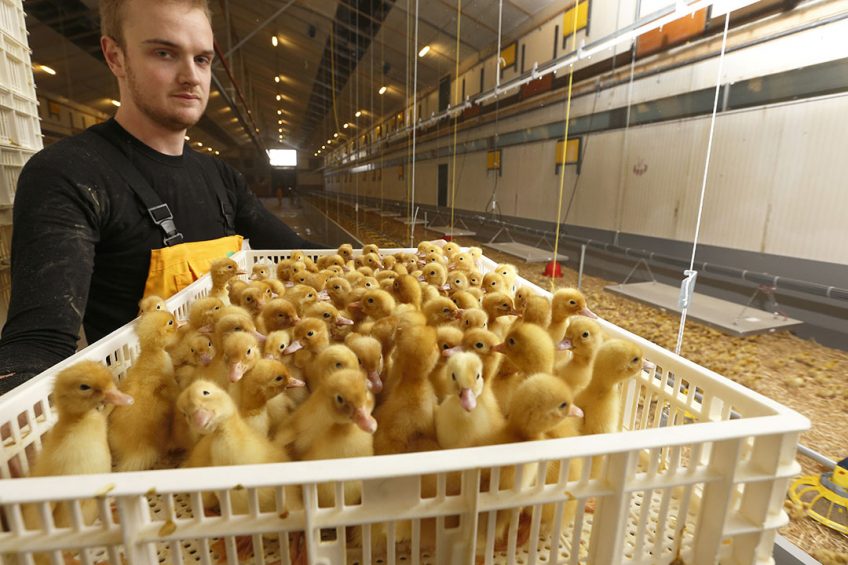Early feeding of ducklings well founded

What exactly is early feeding, and what are the benefits both for animals and breeders? Here are the answers.
Early feeding refers to a feeding practice specifically suited to poultry and used by Grimaud Frères for their Pekin ducks, among other species. The process can be summed up quite simply: it means giving food and drink to ducks as soon as they hatch. This practice is not dissimilar to the natural behaviour of all poultry, including Pekin ducks, which are able to eat immediately after hatching. And while the latter may have energy reserves thanks to the egg yolk and can go without food for up to 4 days, feeding ducks as soon as they hatch jump-starts the digestive system.
Aiding duckling growth
Several US studies have shown that by stimulating ducklings’ digestive capabilities as soon as possible, they see faster growth. Early feeding is therefore a beneficial practice that makes it possible to improve the speed at which the correct weight is reached before slaughter. For Pekin ducks that are intended for the international market, the benefit of early feeding is that it provides wholly enough stores of food and water so the ducks can cope with the time it takes to reach the farm. The animals’ digestive systems are therefore boosted before the breeders’ start-up phase, saving precious time. Obviously, this technique is not of use if the animals hatch in the morning and are delivered to the breeder in the afternoon, where they can be fed.
In order to simplify the breeders’ job and facilitate their endeavours, early feeding acts as an excellent way of reducing performance discrepancies between farms. Production results are likely to differ based on contingencies specific to each farm and the varying degrees of each breeder’s technical ability. If the start-up phase does not go as planned, delayed growth in the ducks can be greatly reduced due to early feeding.
 7 key points when preparing for a new Pekin duck flock
7 key points when preparing for a new Pekin duck flock
Poultry World and Grimaud Freres describe 7 essential points to take into account when preparing for a new flock.
How does early feeding work?
After the chicks have been processed and as soon as they are crated in the hatchery, they can be given food and a water and mineral-based gel to hydrate them. At Grimaud Frères, Pekin ducks are fed immediately upon hatching and do not leave for their future farm until the next day. The amount of food given may be very small, but it is more costly. Early feeding food is far more concentrated than normal start-up food and contains more energy, protein and fat.
“As selection professionals we have much more stringent biosafety and quality standards for the food. With early feeding, if we give the animals food in pellet form it has to maintain its shape and not turn to dust in the crates, or the ducklings will not eat it,” points out Antoine Le Calvé, head of nutrition at Grimaud Frères. So, an ultra-high-quality food is needed in order make early feeding worthwhile. Whether in the form of pellets or small nuggets, the presentation of the food is critical.
Early feeding is primarily used for export, but hydration gel can also be administered upon hatching for summer deliveries within France if temperatures are very high. This is similar to early feeding except that the ducklings are not fed. Hydrating the ducks in advance means that they arrive at the farm in good condition. Grimaud Frères adopted the early feeding technique as part of its constant pursuit of better practices to facilitate breeders’ work and improve the performance of their farms: undoubtedly a well-founded decision.
Author: Antoine Le Calvé, nutrition specialist












